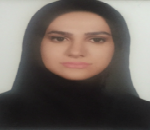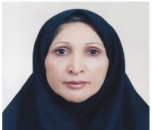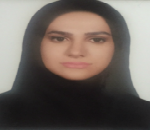Day 2 :
Keynote Forum
Pooya Khan Mohammad Beigi
Misdiagnosis Association, USA
Keynote: Effect of psoriasis on patient’s quality of life
Time : 09:30-10:15

Biography:
Pooya Khan Mohammad Beigi is a Clinical Research Fellow at the Child & Family Research Institute affiliated with the University of British Columbia, Canada and the President/Owner of the NWM Medical Clinic, Canada. He is also the Founder/CEO of Misdiagnosis Association and Society, USA and Founder/CEO of Father Medical Charity, Canada. He is the author of several books in the medical field including Acrodermatitis Enteropathica: A Clinician's Guide (2015), A Clinician's Guide to Mycosis Fungoides (2016), A Clinician's Guide to Pemphigus Vulgaris (2016), A Clinician's Guide to Psoriasis (2017) and A Clinician's Guide to Alopecia Areata (2017).
Abstract:
Objective: Aim of our study is to investigate the effect of psoriasis on different aspects of patients’ life and show the psychological burden of this disease, recognition of high risk people and overall attempting for enhancement of patients’ quality of life.
Method: Present study is an analytical cross sectional study performed by demographic and DLQI questionnaires. Patients responded to the questionnaire containing personal information (age, gender, education, address, marital status, disease duration and extent) and also the questions on application of biological drugs, history of disease recurrence and history of systemic drug use. They also answer to life quality questionnaire; finally, dermographic data including involvement sites and visible or not visible lesions were examined and recorded.
Results: DLQI variable had normal distribution, the average score was 6.51 and its standard deviation was 6.66. Its range varies from 0 to 28. It must be noted that the higher the score, the lower the life quality. The studied variables did not have any significant relationship with life quality. Also the correlation between the age and disease severity, life quality and age and also the life quality and disease severity were not significant.
Conclusion: It seems that the life quality of patients is under the influence of the disease itself rather than its severity, treatment and the variables related to disease symptoms
- Psoriasis - A Multi Organ Disease | Psoriasis - Classification | Complications in Psoriasis | Psoriasis and psoriatic arthritis | Psoriasis: Diagnosis and Treatment | Psoriasis in childrens, adults and adolescence | Psoriasis: Causes and Symptoms
Location: Conference Hall

Chair
Anchala Parthasaradhi
Dr Anchala skin clinic, India
Session Introduction
Mohammed Saiful Islam Bhuiyan
Bangabandhu Sheikh Mujib Medical University, Bangladesh
Title: Pattern of childhood psoriasis in Bangladesh
Time : 10:15- 10:50

Biography:
Mohammed Saiful Islam Bhuiyan has completed his graduation (MBBS) from Chittagong Medical College in 1997 and obtained his MD (Doctor of Medicine) degree from Bangabandhu Sheikh Mujib Medical University, Dhaka, Bangladesh in 2009. He is currently working as an Assistant Professor in the same university. He has presented numbers of scientific papers in different national and international conference including 9th SARCD-2015 in Mysore, India and 23rd WCD-2015 in Vancouver, Canada. He has published 18 papers in different national and international medical journals and he is a Member of Editorial Board of Bangladesh Medical Journal.
Abstract:
Approximately one third cases of psoriasis start before age 16 and their presentation is remarkably variable in children. In Bangladesh very few clinical and epidemiological studies have been done on pediatric psoriasis. This multi-center observational study was conducted in Bangabandhu Sheikh Mujib Medical University and Dhaka Medical College Hospital between July 2011 and June 2015. Pattern of presentation of psoriasis including family history, age, sex, preceding streptococcal infection, pruritus, site of involvement, type, severity, nail involvement and psoriatic arthritis were observed over 138 children (1 day to 18 years). Among them 51.45% were girls and 48.55% were boys, mean age of onset of psoriasis were 7.54±2.73 years, peak age of onset was 6-9 years and positive family history was found in 11.59%. Pruritus was present in 81.16% cases and history of streptococcal sore throat was found in 39.86% cases. Most of the children presented with classic plaque 69.57% and guttate variety were the next common type (18.84%). Erythrodermic, acropustulosis, pustular, psoriasis-eczema overlap, sebopsoriasis, linear and flexural are the other types of pediatric psoriasis. Most of the kids (75.36%) give history of scalp involvement at some point of their sickness. Other commonly involved sites were extensor extremities (41.30%) and trunk (37.68%). Nail and joint involvement were found in 20.29% and 2.90% of children with psoriasis respectively. Knowing these variable presentations of childhood psoriasis is crucial for diagnosis, management and monitoring of this chronic disfiguring disease.
Danial Khorsandi
Harvard Medical School, USA
Title: Personalized medicine: Regulation of genes in human skin ageing
Time : 11:10-11:45

Biography:
Danial Khorsandi is currently a Researcher at the Harvard-MIT’s Division of Health Science and Technology (HST), Brigham and Women’s Hospital and Harvard Medical School and has been working on Genomics, Biotechnology and Biomaterials for 4 years. He has worked at the Barcelona Skin Genomics company in Spain and Biomaterial innovation research center in Boston, USA.
Abstract:
As people grow older, the common conditions and developments that happen by aging is skin changes. For example, over period of time the skin becomes drier and thin and other changes will start to occur such as appearing spots, decreasing elasticity, increasing stiffening and appearance of wrinkles on skin. There are many medical procedures which can be helpful to mitigate skin changing process. The most of the commercialized cosmetic products have been created for the majority of customer’s population. For instance, the use of many anti-aging creams may or may not prevent or even treat the changes of skin. Therefore, the effect of these products can be different on each human body reaction. The causes of this difference can be related to many parameters such as environment, nutrition and etc. Therefore, the human genome book can be the best source of finding the most accurate solution. The appropriate type of cream for an individual’s skin type can be verified and used accordingly. Global gene expression profiling (commonly called genomics) is an approach that can be used in the identification of compounds for inclusion in cosmetic formulations that improve the appearance of aged skin. In this study, the evaluations of all genes and their related antioxidants which lead to skin aging have been studied. The main goal is to match the appropriate medical procedure with the correct type of cream.
N V Batkaeva
Peoples' Friendship University of Russia, Russia
Title: Endocrine, nutritional and metabolic diseases comorbidities in young patients with severe plaque psoriasis: A hospital-based study
Time : 11:45 - 12:10
Biography:
Batkaeva Nadezhda is Dermatoverologist, allergologist-immunologist, clinical micologist, cosmetologist, dermatooncologist. He is Associate professor Department of clinical mycology and dermatovenereology of RUDN University. He is also a assistant of chief editor of "Journal of postgraduate medical education", Moscow, Russia. Dr. Nadezhda is a Member of the Moscow union of dermatologists, International Union against Sexually Transmitted Infections (IUSTI) , Association of allergists and immunologists of the CIS , World Allergy Organization (WAO) , world immunopathology organization (WIPO).
Abstract:
Background: Psoriasis is associated with multiple other comorbidities, including metabolic disorders such as obesity (Obs), Thyroid gland diseases (ThD) and diabetes mellitus (DM) but no study has been performed metabolic disorders in Russian population of Psoriasis (PsO) patients.
Objectives: To evaluate the prevalence of Obs, ThD and DM comorbidity in a hospital-based cohort of patients (patients) with severe PsO.
Methods: 330 patients (234 Male and 96 Female), mean age 39.9±0.9 and 38.05±1.3 years accordingly, mean PASI 49.4±0.56, PsO duration 11.6±0.6 years were included. PsO patients with endocrine, nutritional and metabolic diseases (E00-E90) (ENMD), including thyroid gland diseases (E00–E07), obesity and other hyperalimentation (Е65-Е68), diabetes mellitus (Е10-Е14) were identify in the hospital database reporting and coding by international statistical classification of disease and related health problems (ICD-10) during 2010-2011. All p<0.05 were considered to indicate statistical significance.
Results: 54 (34 Males and 20 Females) out of 330 patients (16.4%) had ENMD. Males and females patients were at the same age. ENMD coding as E00-E07 were found in significantly more cases in female patients compare to male patients in 6 out of 20 patients (30.0%) and in 3 out of 34 patients (8.8%) accordingly (p<0.05). Obs coding as Е65-Е68 were found in significantly more cases in female patients compare to male patients in 13 out of 20 patients (65.0%) and in 19 out of 34 patients (55.9%) accordingly (p<0.05). DM coding as Е10-Е14 were found in significantly more cases in male patients compare to female patients in 16 out of 34 patients (47%) and in 6 out of 20 patients (30%) accordingly (p<0.05).
Conclusions: ENMD comorbidities are common for hospital-treated cohort patients with severe plaque PsO. Young male patients with severe plaque PsO significantly often suffer from DM compared to female patients. Young female patients with severe plaque PsO tend to suffer from thyroid gland diseases, obesity and other hyperalimentation compared to male patients. Patients with psoriasis should be routinely screened for metabolic syndrome in a multidisciplinary manner and treated promptly and effectively.
Anchala Parthasaradhi
Dr Anchala Skin Clinic
Title: Biologics in Management of Psoriasis
Time : 12:10- 13:10

Biography:
Anchala Parthasardhi has completed his MD in Dermatology from Guntur Medical College, Andhra University, India. Currently he is working as the Director of Anchala’s Skin Institute, Hyderabad, India. Earlier he was working as the Head of Department of Dermatology at Image Hospital and successfully guided DNB students in Dermatology. He has presented more than 20 papers in national and international conferences and published more than 5 articles in PubMed indexed national and international journals.
Abstract:
Psoriasis is a chronic, non-communicable, disabling disease for which has no cure and can effect on patient’s quality of life. The prevalence of psoriasis is between 0.09-11.4 percent and is treated with topical and systemic therapies as well as phototherapy which are given in combination usually, in spite having the above therapeutic options, achieving complete cure of psoriasis is far-fetched. The introduction of biologic and small molecule inhibitor targeted therapy has revolutionized the treatment of psoriasis. Biologics are designed to target specific components of the immune system and are a major technological advancement over traditional immunosuppressive medications. Several of these therapies have been released and are available for general use, such as Infliximab, Adalimumab, Etanercept, etc. The major limitation seen with these agents are when it is used on long term basis, it is associated with adverse effects like immunosuppression and opportunistic infections. There is a large unmet need especially in India, for low cost and low toxicity biological therapies for autoimmune disorders. The novel monoclonal antibody Itolizumab binds the T-cell co-stimulatory CD6 and inhibits T-cell proliferation, signaling gene expression and cytokine secretion. Itolizumab has shown to be well tolerated and effective in a randomized phase II trial and phase 3 trial done by Krupashankar et al, where the efficacy and safety of Itolizumab was compared with the placebo, showed that Itolizumab (1.6 mg/kg) was efficacious (P=0.0043) at the end of 12 weeks. The outcomes of these trials clearly demonstrate the efficacy and superior safety profile of the Itolizumab. Biologic therapies, including Infliximab, Etanercept, Adalimumab and Itolizumab, have altered the treatment landscape in the management of moderate-to-severe psoriasis, leading to improved prognosis, control of symptoms, better quality of life for individuals affected with generally high efficacy rates and relatively good safety profiles. It has provided clinicians with the opportunity to directly target the known key mediators in the pathogenesis of this disease; hence it is been included as a treatment modality in the guidelines.
Gitika sanodia
SS Institute of Medical Sciences and Research Center, India
Title: Dermatoses in first 120 hrs of life- a clinical study and statistical survey
Time : 13:55 - 14:15

Biography:
Geetika is currently working as a Post graduate student in the Department of Dermatology in SS Institute of Medical Sciences and Research Center, India
Abstract:
Introduction & Aim: Neonatal skin presents many unique features that reflect immaturity and the transition from intrauterine life. The spectrum of dermatological manifestations during neonatal period varies from transient self-limiting conditions to serious dermatoses. This study was conducted to determine the prevalence of different cutaneous lesions in newborns and to study the prevalence of dermatoses in neonates and to establish the correlation between various neonatal factors, maternal factors.
Materials & Methods: A total of 100 consecutive live-born neonates delivered and admitted to the postpartum ward, neonates admitted to the Neonatal Intensive Care Unit and neonates attending the Dermatology Outpatient Department were included in this study. A detailed assessment of history was performed and a detailed dermatological examination of each of the neonates was carried out. Laboratory procedures were performed as required.
Results: The most prevalent findings were vernix caseosa (87%), Mongolian spot (81%), sebaceous hyperplasia (80%), caput succedaneum (75%) followed by superficial cutaneous desquamation (75%), lanugo hair (63%), milia (40%), salmon patch (35%), epidermal hyperpigmentation (30%), erythema toxicum neonatorum (20%) and miliaria (18.5%).
Conclusion: Neonatal skin lesions are mostly harmless and transient but need to be differentiated from more serious or life-threatening conditions. Due to lack of specialized pediatric dermatology clinics frequently get tossed between a dermatologist and a pediatrician. The identification of normal phenomena and their differentiation from more significant cutaneous disorders of the newborn are necessary.
Discussion: Skin rashes are common in neonate and can cause parental anxiety. Several studies about the prevalence of neonatal dermatoses have been documented in various countries and racial groups. In our study we found that vernix caseosa, Mongolian spots, sebaceous hyperplasia, desquamation, lanugo hair and milia are the skin lesions which are commonly seen in the neonates; revealed statistical significance with both maternal as well as neonatal factors.
Zahra Azizian
Iran university of medical sciences, Iran
Title: Prevalence of thyroid disorder in psoriasis patients
Time : 14:15 - 14:50

Biography:
Zahra Azizian has completed her Medical Doctor degree from Islamic Azad University of Medical Sciences. She is currently pursuing Dermatology Residency.
Abstract:
Background: Psoriasis is a multifactorial disease, many genetic and environmental factors have role in its pathogenesis. It is a hyper proliferative disorder with significant morbidity rate. Some hormones implicate a potential role for example thyroid hormones. It seems these hormones play their roles via epidermal growth factors. Another theory was proposed to explain thyroid hormones therapeutic effect in psoriasis based on their immunity and anti-oxidative potential.
Materials & Methods: This is a case-control study and was done on 56 participants including 26 patients and 30 normal as controls. Data were concluded based on thyroid function test including T3, T4 and TSH.
Results: Statistical analyses performed with SPSS version 21. Findings statistically show significant differentiation between patent and control groups and hypothyroidism among patients was found more than control ones. T3 level was significantly increased in controls than patients 111±46 versus 76±30. Thyroid indices including T3, T4 and TSH were not significantly different between nail psoriasis and other ones. In this study no correlation was found between psoriasis severity and thyroid hormones’ level.
Conclusion: Finally, based on studies’ finding psoriatic patients have hypothyroidism, but different studies showed different hormone impairment for example T4, T3 and TSH. More investigation is needed to evaluate these hormones precisely and to suggest thyroid hormones as a psoriasis treatment modality.
Parvin Mansouri
Tehran university of medical sciences, Iran
Title: Prevalence of liver dysfunction and its related factors in psoriasis patients referred to Imam Khomeini Hospital from 2014-2015
Time : 14:50-15:25

Biography:
Parvin Mansouri is currently working as a Professor of Dermatology in Tehran University of Medical Sciences, Iran.
Abstract:
Introduction & Aim: Psoriasis is a common chronic inflammatory disease that has been associated with metabolic syndrome, a constellation of cardiovascular risk factors including obesity, hypertension, dyslipidemia and insulin resistance has been implicated. We designed this study to investigate the prevalence of metabolic syndrome in patients with psoriasis in Imam Hospital in Tehran, Iran.
Methods: The study was a prospective, hospital based case-control study involving 200 adult patients. Venous samples were taken at the enrollment visit after the subjects had fasted overnight (at least 10 hours). Serum cholesterol and triglycerides were measured and also systolic blood pressure (3 times in different days). Statistical analysis of the data was done using statistical processing software (SPSS-17) software.
Result: Hypertriglyceridemia was significantly more common in psoriatic patients (P=0.004) and also LDL has a significantly higher prevalence (P=0.005) and arterial hypertension (P=0.02). Psoriatic patients with metabolic syndrome have mean disease duration of 30.67±11.87.
Conclusion: Patients with psoriasis have been noted to develop lipid abnormalities. Maintaining normal lipid levels and blood pressure would be an overall benefit to decrease the secondary risk factors for atherosclerotic and cardiovascular diseases. There is a significantly higher rate of metabolic syndrome in psoriasis patients as compared to general population.
Zahra Azizian
Iran university of medical sciences, Iran
Title: The study of drug adherence in psoriasis patients who referred to Imam Khomeini Hospital during 2014 to 2015
Time : 15:25-16:00

Biography:
Zahra Azizian has completed her Medical Doctor degree from Islamic Azad University of Medical Sciences. She is currently pursuing Dermatology Residency.
Abstract:
Introduction & Aim: Psoriasis is a chronic papulosquamous disorder, which affects about 2% of the population. The aim of this study was to evaluated follow up treatment, pattern of drying use and the main causes of drug discontinuation.
Material & Method: In this cross-sectional study, 115 patients with psoriasis in the period 2014-2013 were referred to Imam Khomeini Hospital, in terms of follow-up treatment were studied.
Results: In this study, 115 patients were assessed, of which, 59 (51%) males and 56 (48%) were female. The mean age of patients was 40±14 years. The hand (70%), legs (59.13%), face and neck (46%), head and hair (44%), nails (39.1%) and trunk (30%) in patients was the places of waste, respectively. 96.52% and 63.47% of patients were treated with topical and systemic treatment, 88% of patients had a history of psoriasis discontinuation. The frequency of discontinuation of treatment in 28 patients was between 2 to 4 times. In 28 patients was (22.34%) more than 4 times and in 26 was (22.06%) once. The number of medication and the difficulty of taking (47%), lack of effect on symptoms (35%) and scarce and expensive drugs (30%) were the most common reasons for discontinuation of medication.
Conclusion: With appropriate treatment options considering the patient condition and lifestyle as well as a full explanation to the patient’ course of treatment and possible side effects, the patient can be encouraged to seek treatment to be cured.
Nigusse Zerihun Tesfaye
Addis Ababa University, Ethiopia
Title: The in vitro effect of methanolic extract to the leaf of Aloe otallensis exudates on the Leishmania ethiopica and Leishmania donovani parasite
Time : 16:20- 16:55
Biography:
Nigusse Zerihun Tesfaye has completed his graduation with Chemistry Diploma from Kotebe Teaching College in 2006 and Bachelor of Pharmacy in 2011 from Addis Ababa University, Ethiopia. He was trained on the area of surveillance of insecticide resistance mosquitoes at KEMRI, Kenya Research Center. He was employed at Addis Ababa University, Aklilu Lemma Institute of Pathobiology in 2007 as Technical Assistance and served for the past 5 years. After completing graduation in BPharm, he is working as a Senior Clinical Pharmacist at Addis Ababa University, College of Health Science, Black Lion specialized Teaching Hospital and serving as Drug Supply Management Coordinator, The Head of Special Pharmacy of the Hospital, the Secretary of DTC (Drug Therapeutic Committee) and mentoring under graduate pharmacy students.
Abstract:
Background & Objectives: Several plant products have been tested and found to possess antileishmanial activity. The present study was undertaken to evaluate antileishmanial activity of methanolic extract of Aloe otallensis, which is endemic plant to Ethiopia, on the promastigot stage of Leishmania aethiopica and Leishmania donovani comparing to standard drugs and also tried to screen its phytochemical constituent.
Methods: Phytochemical screening was done on methanolic extract of the exudates to the leaf of Aloe otallensis. The serial dilution of the extract was also evaluated for in vitro antileishmanial activity against Leishmania aethiopica and Leishmania donavani on the strain of L. aethiopica (LDC/134) and L. donovani (AM 563), which is found from the black lion hospital parasitology unit and the result was compared to standard drug of Sodium stibogluconate, milfostin and paramomycin.
Result: The extract has an antileishmaniacidal activity with an IC50 of 141 μg per ml on L. ethiopica (LDC/134) and 123 μg per ml on L. donovani (AM 563). The experimental data shows that relatively it has better activity than paramomycin and milfostin but less activity than sodium stibogluconate, which is given in Ethiopia as a first line drug. The data analyses was done by pad graph prison version 5 software after it was read by ELISA redder at the wave length of 650 nm. The phytochemical screening of the exudates of Aloe otallensis showed the presence of phenol, alkaloid and saponin.
Conclusion: The methanolic extract of exudates of Aloe otallensis has a good antileishmanisis activity relatively to paramomycin and milfostin and this activity may be attributed to phenol, alkaloid and saponin present in the plant. But it needs further analysis for the conformation of which constituent present in much concentration and to know which one have highest role.
